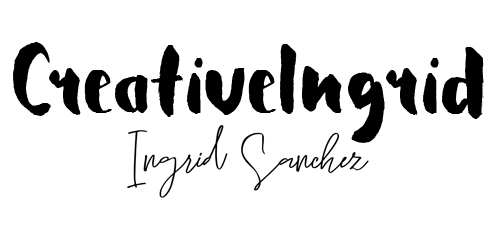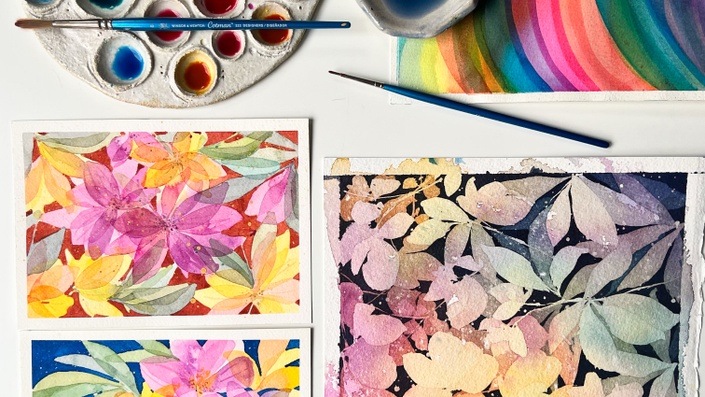Resources for artists
Create a Botanical Blue Dress with SolarFast and Harem Pants
If you’ve been following me for a while, you know I’m rarely without one of my beloved Harem Pants dresses or trousers, especially during the warmer months or when I’m in the studio, getting messy with watercolors. I’ve been wearing Harem Pants for years, and they’ve kindly sponsored many of them, allowing me to experiment with both comfort and creativity.
 |
 |
|
Wearing the Crinkled Hill Tribe Cotton Tank Dress in Teal, while holding one of my Shamanic Drums.
|
I’ve always wanted a blue dress—this is the result of customizing it with SolarFast!
|
But I’ve always wanted one in blue. A deep, botanical indigo that echoed the watercolors I paint with and the calming energy of nature. So I reached out to Harem Pants and asked if they could send me one in plain white, and they said yes!
My Blue Botanical Dress
This isn’t just any dyed dress. I wanted to create something that felt like my paintings had come to life: ferns, textures, soft gradients, and a touch of spontaneity.
Over the past months, I’ve been playing with cyanotypes, which many of you might recognize from my art prints. I did consider trying that on fabric too, but if you’ve done any reading on it, you know cyanotypes aren’t ideal for clothing. The beautiful blue fades easily in the wash and sun, which is heartbreaking after you’ve put so much love into something wearable.
 |
 |
| Facing the Sun, Sunflower Cyanotype, 2025. | Feather Light, Cyanotype, 2025. |
So instead, I turned to SolarFast by Jacquard, which is designed for fabrics. It develops in sunlight just like cyanotype, but the color is much more permanent. Bonus: it comes in vibrant shades, including the perfect blue.
My Process: Printing with Sunlight
 |
 |
| Wearing the Crinkled Hill Tribe Cotton Tank Dress in Off White, just before starting the SolarFast process. | The same dress, now transformed into a one-of-a-kind botanical piece using SolarFast and garden ferns. |
Here’s how I created the dress, step by step:
- Choose a dress: I used the white Harem Pants dress – light, flowy, and perfect for sunlight printing.
- Using SolarFast Blue, I brushed the dye directly onto the fabric in the areas where I wanted the botanical prints, in this case, just the front of the dress. Be sure to do this step away from direct sunlight, as SolarFast is UV-sensitive and the developing process begins almost immediately when exposed to UV light.
- Gather ferns: I picked fresh ferns from my garden and laid them out on the front of the dress.
- Expose to sunlight: I placed the dress under direct sunlight for about 20 minutes to let the magic happen. You'll notice the color begins to shift almost immediately as the UV light hits it, but the final shade won’t fully reveal itself until after you wash the fabric.
- Wash with SolarFast Wash: This special shampoo helps remove any undeveloped dye and sets the print so it lasts.
- Add artistic details: To make it more “me,” I painted some ferns by hand and added watercolor-like splatters on the back of my dress, a technique I often use in my paintings.
- Wash once again with SolarFast Wash.
 |
 |
| Ferns placed on the white dress with SolarFast applied. | After 20 minutes of sunlight exposure. |
You can find the products I used here:
* I used approximately 6 oz of dye to paint the entire front of the dress and add a few brushstrokes on the back.
USA
UK
WORLDWIDE
Watch the Transformation
I made a short video to show you how the dress turned out: click here to watch it. It's so satisfying to see the ferns come to life in that vivid blue!
 |
 |
And one last exciting thing, I can almost tell you…
This dress and I are about to make a small appearance on TV. I can’t share when or where just yet, but keep an eye out, it’s happening soon!
Thanks for reading and for supporting my creative journey. I love finding new ways to merge my painting practice with the things I wear and live in.
With blue fingers and lots of joy,
Ingrid 💙
Note: Some of the links in this post are affiliate links, which means I may earn a small commission if you make a purchase, at no extra cost to you. I only share products I genuinely love and use in my creative practice. Thank you for supporting my work!
How to Paint Layered Florals with Acrylic Inks and Masking Fluid – Online Class
Excited to Share My Third Floral Painting Class!
|
Learn how to paint expressive florals using masking fluid and acrylic inks, with layering techniques to create vibrant, watercolor-style effects. With optional subtitles in English | Con subtítulos opcionales en Español | Avec des sous-titres automatiques optionnels en français |
Do you know that it’s possible to use acrylic inks to paint watercolor-like paintings?
Why would we do that? Well, acrylics are super vibrant, lightfast, and incredibly versatile. They’re great companions in the studio, perfect for adding rich, lasting color to your artwork. I always reach for them when I want to explore expressive florals, and I’m so excited to share these techniques with you in my new online class.
I’m so happy to introduce the third class in my Painting Flowers series:
“Painting Flowers No.3: Masking Fluid & Acrylic Inks for Watercolor Style”, now available online!
This class is very close to my heart, as it brings together all the playful, expressive techniques I love using in the studio. You’ll learn how to paint vibrant, layered florals using acrylic inks, masking fluid, and watercolor-style washes, a combination that’s become a signature in my work as CreativeIngrid.
 |
 |
| Learn how to prepare your palette using acrylic inks to achieve watercolor-like effects, and explore creative layering techniques with inks and masking fluid, no drawing needed. | Ingrid guides you through a set of structured exercises, including Four Mini Projects to help you experiment with ink behavior and layering techniques. |
Whether you're new to acrylic inks or looking to expand your mixed media practice, this class offers a relaxed, step-by-step structure. We’ll start with four mini projects to get familiar with materials, then dive into two beautiful crocus flower paintings, a "day" and "night" version to explore mood and light.
We’ll wrap up with a bold, abstract floral piece that brings together everything you’ve learned.
As a little bonus, I’ve included Colorful Waves, a calming, non-instructional video filmed in my London studio. It’s a quiet, meditative moment to simply enjoy the process of painting.
This class is perfect if you're looking to:
-
Experiment with layering techniques using acrylic inks
-
Learn how to use masking fluid to preserve light
-
Create depth and texture through vibrant washes
-
Paint expressive, floral-inspired art in your own voice
READ MORE HERE - OR ENROLL BELOW |
How to rescue dry watercolor tubes
Have you ever found yourself staring at dried-up paint, wondering if it's destined for the trash bin? We've all been there. It's a familiar dilemma for artists: the frustration of seeing once-vibrant colors reduced to hardened clumps.
But don’t worry! Before you say farewell to your beloved paint, I'll show you how to rescue and revive it. With a few simple steps, you can turn those clumpy colors into something usable again, saving both paint and money!
Follow this step-by-step technique
 |
 |
| 1. Does your paint tube look like this? | 2. Fill a jar with a little water, as shown here, and dip the tip of the paint tube for a day. |
 |
 |
| 3. Place the paint in the palette or pan, and use the tip of a toothpick or any other tool to remove leftover paint. Cutting the tube will make it easier. | 4. Once it’s in the palette or pan, let it dry. Spray some water to reactivate it whenever you paint. |
 |
 |
| 5. Use the remaining water to paint. | Check out the video tutorial here and paint a mini moon with me! |
I'm glad I could share these tips with you! I hope you find them useful. If you've tried rescuing your dried paint tube, please share your experiences with me—I'd love to hear from you!




